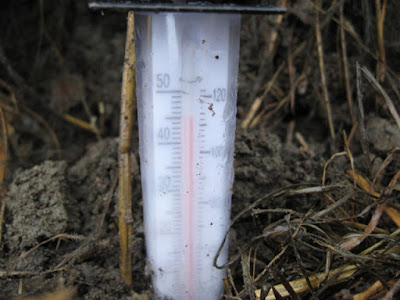This really doesn't matter to the hop farmer though, because our work never ends. Spring, summer, fall, or winter....there is always something to work on at the farm.
The above obligatory farmer gripe is well justified because we began pulling rhizomes out of the ground on March 9th while the rest of Canada was still under the strong, frigid grip of winter. Lillooet has been crazy hot over the past few weeks, hitting 16 degrees Celsius as these daily highs begin to warm the soil's surface awakening the underground stems.
Yes, you heard right - underground stems. But why heck are stems growing underground? I don't know, I'm an ornithologist, not a botanist (Read more here about our research group's most recent work on the amiable Yellow Warbler). But what I do know is that this growth strategy is shared by other plant species, such as the familiar ginger plant and the irises you mom used to plant in your front yard.
Question #2: Why are we hard at work pulling these out of the ground? Excellent question. Well, the answer is simple: Our friends at Left Fields organic farm in Sorrento, BC asked for some - I mean, a lot. Seems people across Canada have been in search of these odd little pieces of plant material with spectacular growth potential for quite some time. From the small-time gardener to the upstart organic hop farmer, rhizomes are the first place to start if you want to grow hops yourself or if you just want to enjoy their unique growing habit on the south-facing side of your domicile.
The folks behind Left Fields, Rebecca Kneen and Brian MacIsaac, are perhaps best known for their on-site organic farm brewery called Crannog Ales. But they are quickly becoming equally well-known for their propensity to get hop rhizomes into the hands of botanophiles across the country. Here at Bitterbine, we are direct suppliers of certified organic rhizomes (PACS #16-487) to Left Fields. We dig, they distribute, people grow.
Keep checking back because this hop farmer has plenty more to report on...including the first tranche of hop shoots to be picked and shipped to fine restaurants around Vancouver.


































